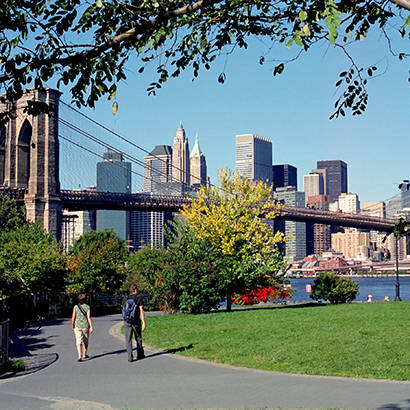
Last week, the Community Preventive Services Task Force announced a new recommendation designed to increase physical activity though built-environment approaches that combine transportation-system interventions with land use and environmental design. These approaches combine new or enhanced transportation systems (e.g., pedestrian and cycling paths) with new or enhanced land-use design (e.g., proximity to a store, access to a public park) to promote physical activity among residents.
The Task Force finding is based on a systematic review of 90 studies that showed that combinations of activity-friendly, built-environment characteristics are associated with higher levels of transportation-related physical activity, recreation physical activity, and total walking. The review was conducted on behalf of the Task Force by a team of specialists in systematic review methods, and in research, practice and policy related to physical activity.
What does this mean for park and recreation agencies?
This is great news! It confirms what we have known for years —parks get people walking, and are an essential piece of creating a healthy community. This recommendation is a great resource to have in your back pocket as you work with public health, transportation and planning partners to make the case for infrastructure investments in and around your parks, trails and recreation centers. Additionally, these investments should include supports for active transportation such as well-maintained sidewalks, trails and bike lanes to get people to and from parks and other community destinations.
To support the health of our communities and parks, it also means that as good partners, we should continue advocating for a mix of destinations in our communities and around our parks, including affordable housing, schools and a variety of stores.
In addition, this recommendation directly supports NRPA’s Safe Routes to Parks initiative. This initiative aims to put this research into action to engage local communities by increasing built-environment and programmatic support for walking and biking access to parks as a way to promote increased physical activity, and improve health outcomes in underserved communities.
Check out these 10 communities that have been selected to pilot and receive free technical assistance to the Safe Routes to Parks action framework.
Rachel Banner is NRPA’s Program Manager.


